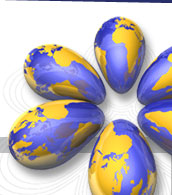Principles
In contrast with the other methods, this process replaces the bottle with a pressure-resistant steel tank. This tank is in effect one gigantic bottle containing several thousand litres of wine.
Sugar and yeast are added to the base wine, which is kept at a temperature of 20°C. The secondary fermentation (“prise de mousse”) lasts only 10 days. Once it is completed, the sparkling wine is chilled to -2°C in order to stabilise it and reduce its effervescence. It is filtered at low temperature, transferred to a buffer tank to preserve its carbon dioxide content and then bottled with a counter-pressure filler.
The counter-pressure in the buffer tank and at bottling is provided by exogenous carbon dioxide. There is no mixing between the CO2 in the wine and the exogenous CO2. At the filler outlet, the bottles are immediately corked and wired.
- Phase 1 : Preparing the base wine
Classic white winemaking techniques
- Phase 2 : Making the sparkling wine
See the figure below.




